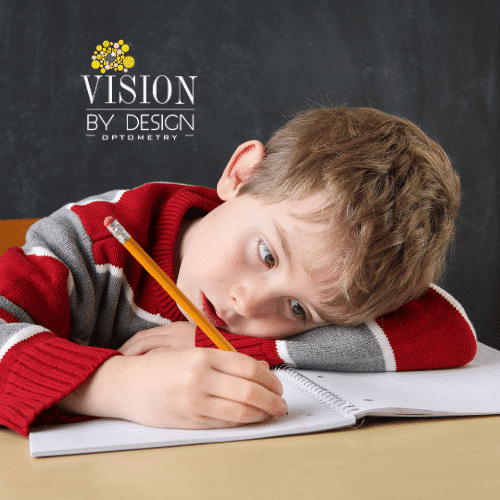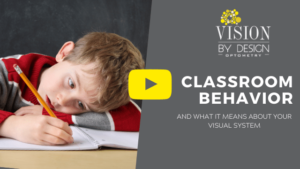
Lazy Eye Treatment Edmonton | Vision Problems Common in Children
Lazy Eye Treatment Edmonton | Vision Problems Common in Children
When people think of vision problems, they often think about lazy eyes, and patching being a lazy eye treatment in Edmonton. However, while having a lazy eye is still a vision problem that children have.
There are other problems that are far more common. That parents should be aware of. So that they can watch for signs in their child. And get them the help they need.
Whether they need a lazy eye treatment in Edmonton, or some other form of treatment or therapy. However, it is most important that parents watch for problems first. And then bring them in the right diagnosis.
One of the most important things for parents to keep in mind. Is that their children can have perfect vision. And also have visual problems. Because there are many different visual skills needed.
In order to process the visual world around them. And while many different activities require many different visual skills. Children with vision problems especially struggle in a classroom setting.
Because in a classroom setting, 80% of the learning takes place visually. And even having one visual problem. Can significantly impact the child. Which is why it is important to know what to look for.
In order to get the right diagnosis, and subsequently the right treatment. And one of the most common be able or signs of a vision problem in a child is going to be behavioural-based.
Because that Bob be how they cope with their vision problem. For example, a child that has a convergence insufficiency. As a hard time focusing on things close up.
More...
And things can be blurry, or have double vision. Which can be very irritating to try and look at. And they can develop eyestrain from trying. Therefore, when children have convergence insufficiency.
They often avoid doing near work. Or they do not pay attention when they are completing work that is done close up. And this is easily mistake of a as children who are unable to concentrate.
And they get diagnosed as having attention deficit disorder, or ADHD. When that is not the case at all. When they have an accommodative issue, they have a hard time looking at things that are close up.
Because they feel physical discomfort and pain in their eye muscles. And again, they will use avoidance as a coping mechanism. And this is not because they are unable to pay attention.
But because they are trying to cope with feeling pain in their eyes. Because they do not realize that this pain is not normal. And find they, children can have an eye tracking issue.
And what this refers to, is an inability to successfully follow moving objects. But in a classroom setting, it simply means able to move from one word to the next successfully. In order to read.
When these are the problems that children have. They need to get the right diagnosis from a vision therapist. And whether they need a lazy eye treatment in Edmonton.
Or a treatment to help them overcome their convergence insufficiency or accommodative issue. They will be able to find the right treatment once the right diagnosis is made.
Lazy Eye Treatment Edmonton | Vision Issues Are Common in Kids
Parents need to understand that 25% of children can suffer from some visual problem, and whether they need a lazy eye treatment in Edmonton. Or a different type of therapy. The first step is getting the right diagnosis.
The reason why the right diagnosis is so important. Is because many children go undiagnosed with the vision problem for many different reasons.
The first reason, is because children do not realize that how they are seeing things. Is not normal, because that is how they have been seeing things for their entire life.
Therefore, they are not going to articulate using words to their parents. That they are struggling seeing things up close. Because they have no idea that what they are experiencing is not typical.
And just like a child who has a lazy eye, and needs a lazy eye treatment in Edmonton. Children are not going to be able to say that they have a problem. Because they do not realize that they have one.
If a parent has taken their child to an optometrist. And was told that the child has perfect vision. Contemplating that their child might have vision problems is something that does not even cross most people’s minds.
Because they think that if they have perfect vision. That they cannot possibly have a vision problem. However, the visual system is a very complex one. And a lot of communication is visual.
More...
It is not just being able to see the information clearly. But understanding it as well. Therefore, when children have different visual problems. They may also have perfect vision as well.
When children have a problem such as an accommodative issue. This refers to the physical pain they may feel in their eye muscles when they view things up close.
They may tend to avoid doing near work. Such as reading, assignments and homework. Because of the physical pain that they feel. Which can often have parents, and teachers assume that they are having trouble concentrating.
However, the thing that they need to pay attention to. Is if the child can pay attention and concentrate. When they are not doing near work. Such as following verbal directions. It may not be an attention problem.
And rather, a problem with their vision, that is causing them to avoid the activities. So it is not just watching one behaviour. Parents as well as teachers need to watch many different behaviours.
Another sign is if the child does not like reading. But loves being read to. This also indicates that they are most likely having a hard time seeing, and not concentrating, or paying attention.
Getting the right diagnosis means going to an optometrist that has a vision therapist on staff. Such as vision by design in Edmonton. And whether they get a diagnosis, such as a lazy eye that simply needs a lazy eye treatment in Edmonton.
Or if the child gets diagnosed with something different like a convergence insufficiency, or an accommodative issue. The right diagnosis help them get the right treatment. To help them see the visual world.
